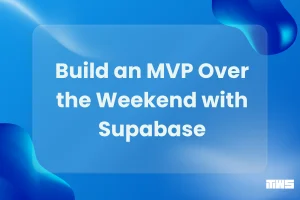Building Fintech Platforms That Last: The Role of the Right Tech Stack
In the fintech space, the tech stack you choose can be the difference between market fit — and missed opportunity.
From payment orchestration to fraud prevention, every layer must work under tight compliance and deliver at scale. But with hundreds of options out there, how do you choose what’s right for your business?
At Team Work Spirit, we’ve helped fintech companies across the US and Europe build reliable, scalable digital platforms. Here’s what we’ve learned.
Why Tech Stack Matters in Fintech
- Compliance with regulations like PSD2, PCI DSS, or SOC 2
- Security for sensitive financial data
- Scalability to handle growth spikes and multi-regional traffic
- Speed — both in product performance and development
Your tech stack will directly affect all of these. Make the wrong decision early, and your team may face expensive rework or security gaps down the road.
The Core Components of a Fintech Tech Stack
1. Frontend Frameworks
Choose frameworks that are fast, secure, and scalable:
- React (widely used in fintech, strong ecosystem)
- Vue.js (clean architecture, easier onboarding)
- Next.js (for performance and SEO-critical apps)
Example: A client from the digital banking sector improved customer onboarding speed by 42% after moving from a legacy frontend to React with server-side rendering.
2. Backend Languages & Frameworks
Fintech platforms often require high-concurrency and data integrity. Popular options:
- Node.js (great for APIs and real-time features)
- Java (mature, battle-tested, often required for banks)
- Python/Django (fast to prototype, widely used in crypto and AI-based fintech)
Tip: Avoid monoliths. Start with modular architecture, ideally microservices or service-based.
3. Databases
You’ll need a combination of:
- Relational DBs (PostgreSQL, MySQL) for transactions
- NoSQL (MongoDB, Redis) for sessions, caching, logs
Don’t underestimate the value of data modeling in early stages — it reduces the risk of regulatory issues later.
4. Cloud & Infrastructure
- AWS, GCP, Azure — pick what your team knows best, but validate compliance options (e.g., PCI-ready services)
- Kubernetes or Docker for container orchestration
- Terraform / Pulumi for infrastructure-as-code
How to Choose: Key Questions to Ask
- What are the compliance standards we must meet?
- Do we need real-time processing?
- Will we serve users in multiple countries?
- How fast do we plan to scale?
Your answers shape your architecture. A crypto wallet startup may prioritize modularity and fast deployment, while a B2B lending platform needs traceability, audits, and reporting logic built-in.
Mistakes to Avoid
- Overengineering: Don’t build for 100 million users if you have 500. Build flexibly, not excessively.
- Ignoring DevOps early: Fintech needs proper CI/CD and observability from the start.
- Skipping security layers: You’ll regret it when auditors show up.
Our Approach to Fintech Architecture
Team Work Spirit doesn’t just ship code — we act as a full-cycle tech partner. For fintech platforms, we:
- Evaluate regulatory requirements and traffic expectations
- Define scalable architecture tailored to the business model
- Build cross-functional teams for backend, frontend, DevOps
- Prioritize observability, security, and performance
See our recent fintech case studies:
Final Thoughts: Your Tech Stack Is a Strategic Asset
The best fintech products aren’t just beautiful or fast — they are stable, compliant, and ready to grow. Choosing the right stack from the start gives your team speed without shortcuts.
Want to explore how we’ve done it for others?
Visit our blog or reach out at twsgo.com



